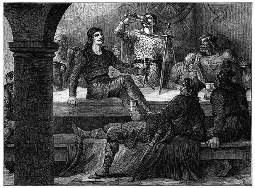 Just as there are certain guitar licks, walkdowns, turnarounds, and other patterns that can help with the flow and structure of a song, writing and storytelling have some generic techniques that can be used to great effect, or great failure, depending on how, when, and why they’re applied.
Just as there are certain guitar licks, walkdowns, turnarounds, and other patterns that can help with the flow and structure of a song, writing and storytelling have some generic techniques that can be used to great effect, or great failure, depending on how, when, and why they’re applied.
The most universal and familiar in fiction is probably the framing device that starts many children’s stories: “Once upon a time…” and ends them with, “And they lived happily ever after.” Those phrases are an emotional touchstone for most readers, taking them back to a magical time when stories were a centerpiece to our lives.
But most of these shortcut techniques aren’t used as often, and aren’t guaranteed to evoke a specific emotional response. Let’s look at a risky writing technique: The “It Was Only A Dream…” ending.
I generally hate this kind of ending, because it feels like a trick. It feels like the writer is chanting “Neener neener!” and laughing at the audience who fell for this prank.
However, as Eric Cherry (my frequent writing-neepery partner) and I explored specific instances of it being used, I realized that I didn’t always hate it. I just have such a strong emotional reaction when it’s used badly that it overshadows my appreciation of the times when it’s used well.
To use it in a way that respects the audience, it should shine the light of what we know about the story through a prism that reveals new facets to the story, rather than negating all that came before. It should make us embrace what we’ve already experienced within the story, and then view all of that in a new way.
…
Read More Read More











